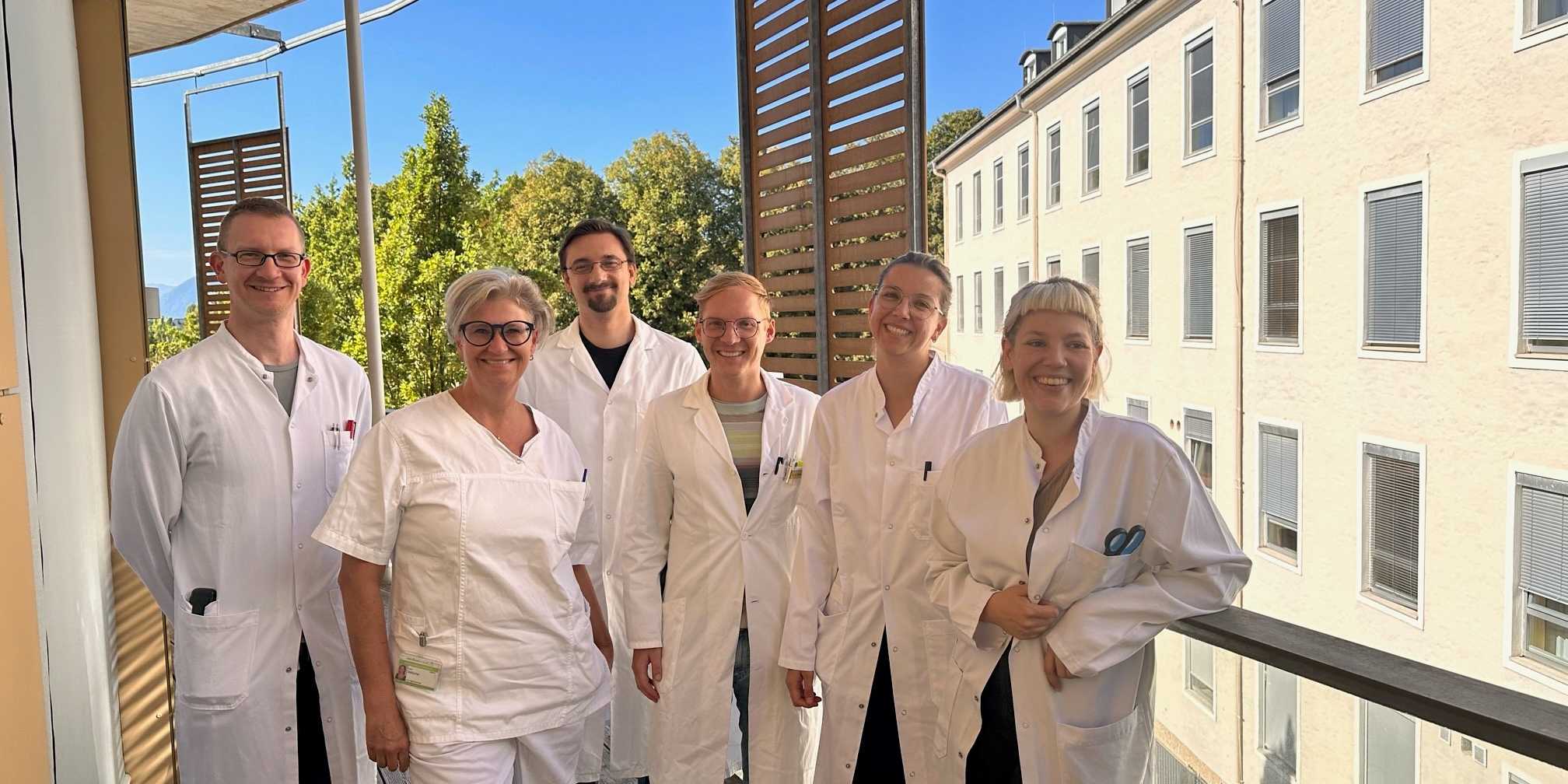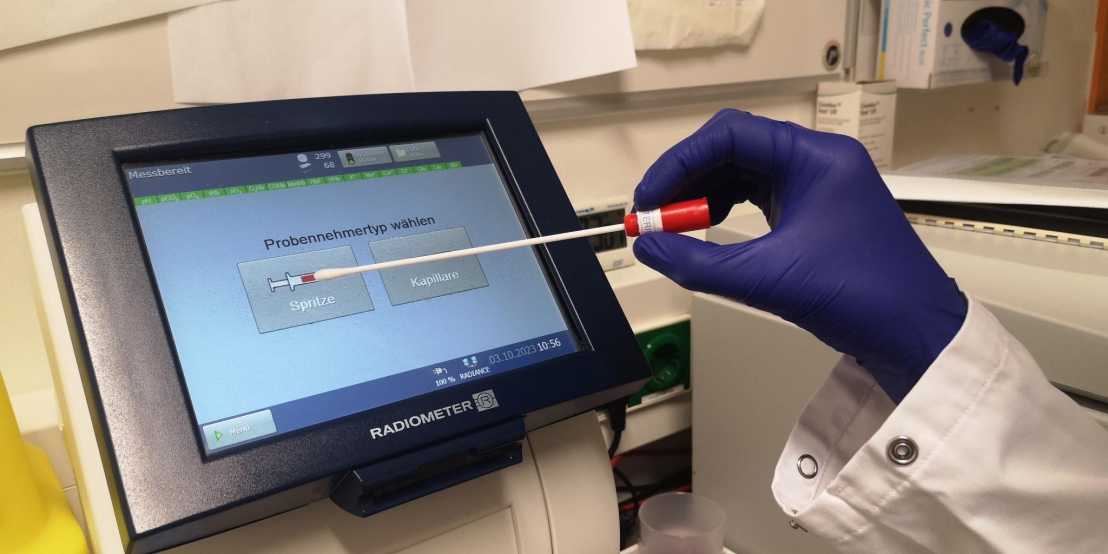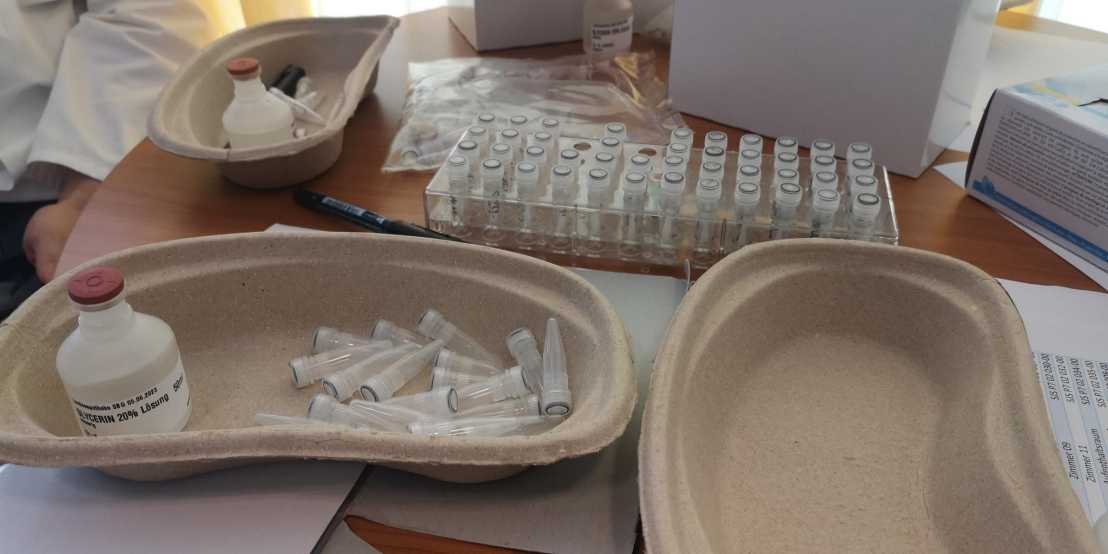Research Collaboration between Uniklinikum Salzburg and FML in the field of Hospital Hygiene
The University Hospital of Salzburg and the Functional Materials Laboratory (FML) at ETH Zurich have recently started a research collaboration in the field of hospital hygiene. The aim of this partnership is to test the application of silica nanoparticles encapsulating DNA (SPED) in a real hospital environment to investigate pathogen transmission pathways.


The University Hospital of Salzburg and the Functional Materials Laboratory (FML) at ETH Zurich have recently started a research collaboration in the field of hospital hygiene. The aim of this partnership is to test the application of silica nanoparticles encapsulating DNA (SPED) in a real hospital environment to investigate pathogen transmission pathways. The SPED technology was developed by FML and has already been used in various fields to track the distribution of water and pesticides1, 2.
A key focus of the research collaboration is the use of SPEDs to track and monitor pathogens in hospitals. In hygiene settings, SPEDs are used as surrogates for pathogens and are applied to high-touch surfaces or devices. The transmission pathways of these surrogate pathogens can be investigated by sampling the surfaces of interest and analysing them by polymerase chain reaction (PCR). Due to the highly sensitive and specific detection of SPEDs by PCR, they can be found on previously touched surfaces, thus elucidating possible pathogen transmission routes.

The aim of the research collaboration is not only to generate scientific knowledge, but also to test the SPED technology developed by FML in real-life hospital settings and in a larger study than has been done to date3, 4. Through close collaboration between scientists, medical professionals and technologists, the aim is to test research findings directly in practice, gain new insights and ultimately have a positive impact on patient safety.
(1) Mora, C. A.; Schärer, H.-J.; Oberhänsli, T.; Ludwig, M.; Stettler, R.; Stoessel, P. R.; Grass, R. N.; Stark, W. J., Ultrasensitive Quantification of Pesticide Contamination and Drift Using Silica Particles with Encapsulated DNA. Environ. Sci. Technol. Lett. 2016, 3, 19-23. external pageLink
(2) Mikutis, G.; Deuber, C. A.; Schmid, L.; Kittilä, A.; Lobsiger, N.; Puddu, M.; Asgeirsson, D. O.; Grass, R. N.; Saar, M. O.; Stark, W. J., Silica-Encapsulated DNA-Based Tracers for Aquifer Characterization. Environ. Sci. Technol. 2018, 52, 12142-12152. external pageLink
(3) Scotoni, M.; Koch, J.; Julian, T. R.; Clack, L.; García, A. K. P.; Wolfensberger, A.; Grass, R. N.; Sax, H., Silica nanoparticles with encapsulated DNA (SPED) – a novel surrogate tracer for microbial transmission in healthcare. Antimicrob. Resist. Infect. Control 2020, 9, 152. external pageLink
(4) Ullrich, C.; Luescher, A. M.; Koch, J.; Grass, R. N.; Sax, H., Silica nanoparticles with encapsulated DNA (SPED) to trace the spread of pathogens in healthcare. Antimicrob. Resist. Infect. Control 2022, 11, 4. external pageLink
